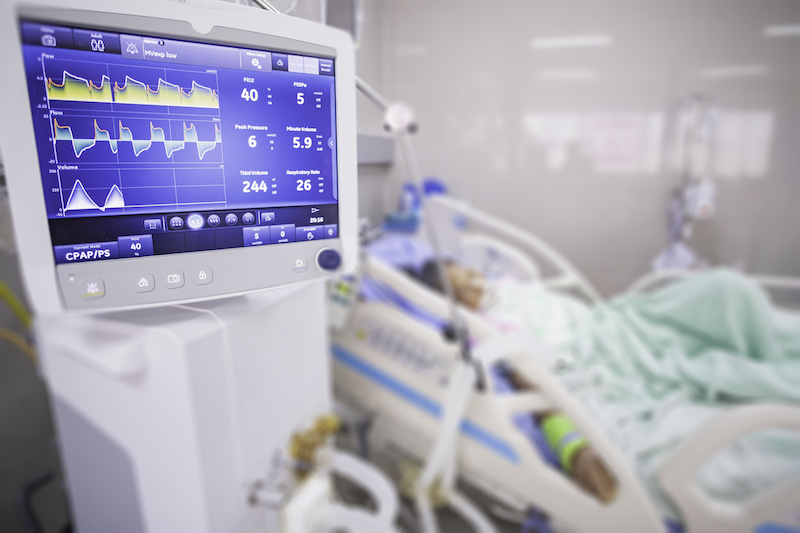A snapshot of COVID-19 in children admitted to the PICU

Experts have recently warned of cases of serious inflammatory illness in children possibly related to COVID-19. But a report in JAMA Pediatrics this week reinforces the fact that serious complications have been rare in children with the new coronavirus, especially if they have no underlying health conditions.
The new study represents the first cross-sectional, multi-hospital analysis of pediatric COVID cases in North America. A consortium of 46 pediatric intensive care units (PICUs) in the U.S. and Canada pooled their data for COVID-19 admissions between March 15 and April 3. The PICUs are part of the International PICU COVID-19 Collaboration, formed on March 14.
Thus far, children in North America continue to face a far greater risk of critical illness from influenza than from COVID-19.”
– Jeffrey Burns, MD, MPH
During the 20-day study period, 14 of the 46 PICUs, all in the U.S., admitted children with confirmed COVID-19. The 48 children ranged from 4 to 16 years old. The investigators followed them through April 10.
Jeffrey Burns, MD, MPH, chief of Critical Care Medicine at Boston Children’s Hospital, coordinates the international PICU collaboration and was senior author on the paper.
“It is notable that only a third of the participating PICUs actually admitted children with COVID-19 during the study period,” he says. “Of the 48 patients who were admitted, all but two survived. That reflects the decreased burden of disease from COVID-19 in children compared with adults.”
COVID-19 in the PICU: Features, treatment, outcomes
Of the 48 children admitted to the 14 PICUs, 52 percent were boys, with characteristics as follows:
- 83 percent had significant pre-existing health conditions, most commonly medical complexity, obesity, diabetes, immune compromise, and malignancy.
- 69 percent were critically ill at the time of admission, and 73 percent presented with respiratory symptoms.
- Other presentations included neurologic, circulatory, and gastrointestinal problems; diabetic ketoacidosis; and sickle cell crisis.
Treatment
- 38 percent of the children required invasive ventilation.
- 1 required extracorporeal membrane oxygenation (ECMO).
- 61 percent received drug treatments, most commonly hydroxychloroquine (the study was not designed to evaluate their efficacy).
Outcomes
- Two of the 48 patients (4 percent), ages 12 and 17, had died at the end of follow-up. Both had pre-existing illnesses and developed multi-system organ failure.
- 15 patients (31 percent) were still in the hospital at the end of follow-up. Three of them still required ventilator support and one was on ECMO. The rest of the patients were discharged, having spent a median of five days in the PICU and seven days in the hospital.
As of May 10, after the paper went to press, all 15 children have now been discharged from the PICU. While only 1 has been discharged home, the rest are in improving condition and are expected to leave the hospital in the coming week or weeks.
Putting children’s COVID risk in perspective

Meanwhile, tracking of children in the PICU continues. Although the number of pediatric hospital and ICU admissions for COVID-19 is very small, Burns acknowledges that it is likely to climb over time.
“But thus far,” he says, “children in North America continue to face a far greater risk of critical illness from influenza than from COVID-19.”
Lara Shekerdemian, MD, MHA, of Texas Children’s Hospital, was first author on the JAMA Pediatrics paper. See the paper for a list of all 14 participating hospitals.
Learn more on Boston Children’s response to COVID-19 and COVID-19 research at the hospital.
Related Posts :
-

Why parents really need to talk to their children about the news
These are strange, anxiety-provoking times. That’s true no matter where one lives or where one sits on the political ...
-

Taming vaccine data: Joann Arce, PhD
Part of an ongoing series profiling researchers at Boston Children’s Hospital. Joann Arce, PhD, is a data tamer — corralling ...
-

Immune biomarkers predicted COVID-19 severity and could help in future pandemics
Why did some people fall critically ill from COVID-19 and others not? In May 2020, as COVID-19 swept the world, Boston ...
-

Advancing mother-child health globally: Grace Chan MD, MPH, PhD
First in an ongoing series profiling researchers at Boston Children's Hospital. Globally, five million children die annually before the age ...





